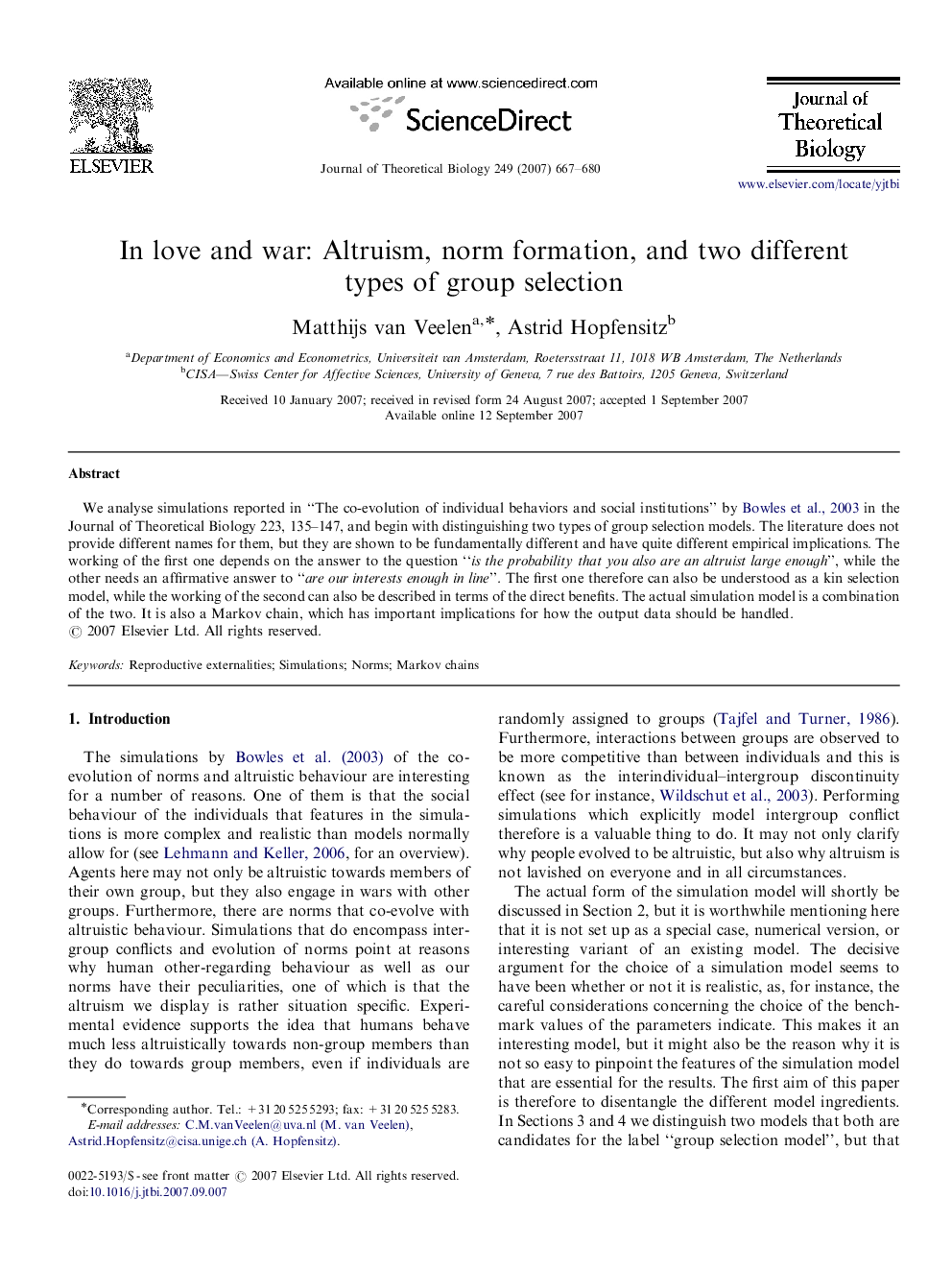| کد مقاله | کد نشریه | سال انتشار | مقاله انگلیسی | نسخه تمام متن |
|---|---|---|---|---|
| 4498759 | 1318998 | 2007 | 14 صفحه PDF | دانلود رایگان |

We analyse simulations reported in “The co-evolution of individual behaviors and social institutions” by Bowles et al., 2003 in the Journal of Theoretical Biology 223, 135–147, and begin with distinguishing two types of group selection models. The literature does not provide different names for them, but they are shown to be fundamentally different and have quite different empirical implications. The working of the first one depends on the answer to the question “is the probability that you also are an altruist large enough”, while the other needs an affirmative answer to “are our interests enough in line”. The first one therefore can also be understood as a kin selection model, while the working of the second can also be described in terms of the direct benefits. The actual simulation model is a combination of the two. It is also a Markov chain, which has important implications for how the output data should be handled.
Journal: Journal of Theoretical Biology - Volume 249, Issue 4, 21 December 2007, Pages 667–680